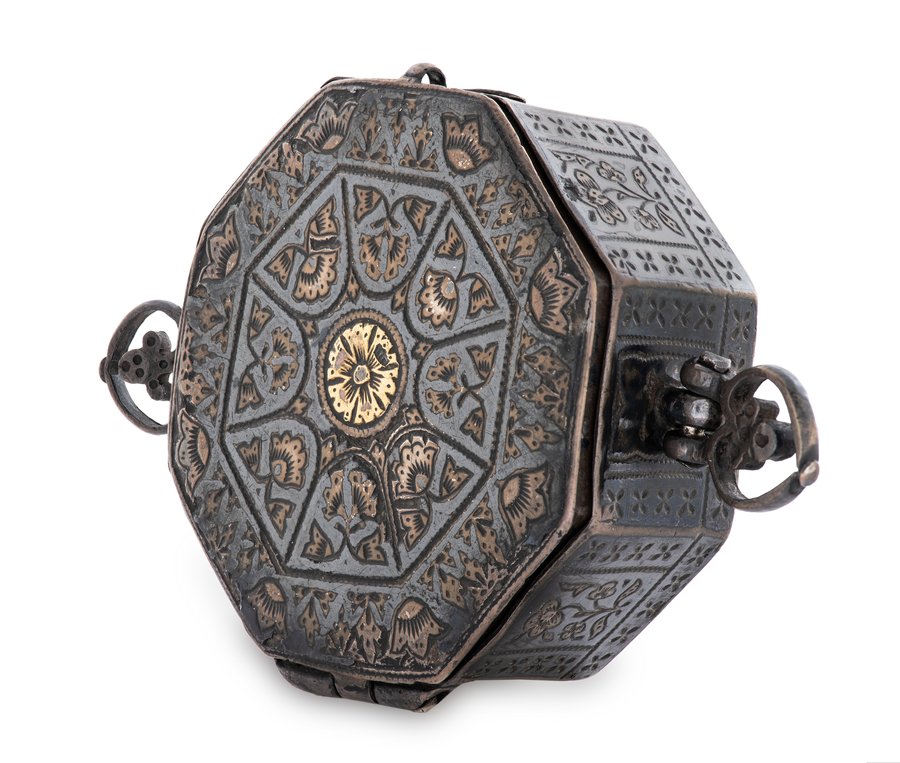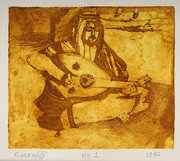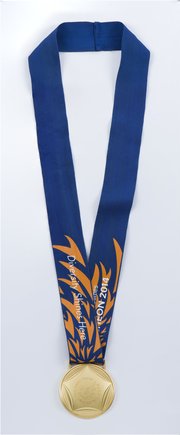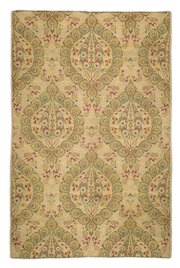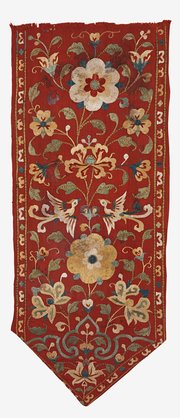
Metal Case for Miniature Qur'an
Museum of Islamic Art
- Title:
- Metal Case for Miniature Qur'an
- Production place:
- Iran
- Date:
- 1800 - 1900
- Period:
- Qajar
- Title:
- Metal Case for Miniature Qur'an
- Production place:
- Iran
- Date:
- 1800 - 1900
- Period:
- Qajar
- Material:
- Silver, Gold, Black compound, Copper alloy, Solder
- Technique:
- Casting, Inlaying, Engraving, Soldering
- Dimensions:
- 2.28 × 6.28 × 5.81 cm
This particular case would have contained a miniature Qur’an of similar octagonal shape and was made in Iran during the Qajar period (13th to 14th century AH/19th century CE). It is of silver with engraved floral decorations in gold and silver, and reserved space filled with black compound (a technique known as niello). The two small heart-shaped rings attached on the sides indicate that this case and its holy content could have been worn strapped to an arm or sewed onto clothes lining. In some cases, these miniature Qur’ans were carried in the battlefields sewed on military banners to protect the troops. The production of Qur’an manuscripts in miniaturised size has a long history that dates back to the earliest centuries of the Islamic era.
Miniature Qur’ans were generally employed for personal use, carried around or sewed on clothes to protect their beholders and ward off evil thanks to the holy status of the revealed word. They were carried around in small boxes, mostly made of metal and shaped accordingly to match the shape the miniature manuscript.
